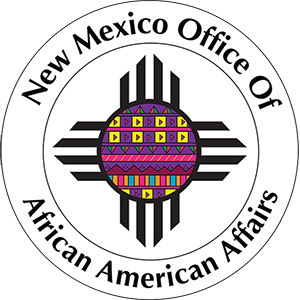Black Doctors: Is there a doctor in the house?
Does the cost outweigh the degree?
National Minority Health Month is almost over, but the conversation for equitable healthcare is not. In this article the New Mexico Office of African American Affairs will discuss the shortage of African American doctors, and possible reasons for that shortage. We recognize that there is a shortage of healthcare providers nationwide. but in this article we will focus on African American providers. One possible factor to impact African American becoming doctors is the cost of obtaining the qualifications. Jobs within healthcare are specialized careers. Specialized careers will have specialized education, and in most cases a higher expense. To become a doctor one must complete a bachelor’s degree, pass the Medical College Emission Test (MCAT), apply for medical school, complete training at medical school, pass parts one and two of the United States Medical Licensing Examination (USMLE), get matched with a residency, graduate from medical school and start a residency, they then must pass part three of the USMLE test and complete their residency. Finally, after that they must earn the board certification in their chosen field, then apply for a state license. After all that, they can apply for jobs as a doctor. (4) The steps to become a doctor take a commitment of time and money.
Money is a massive factor for continued education and if you are an African American you typically do not come from a family that makes the median household income. As of 2021, 52% of African American households make less than $50,000 annually and 48% earn more. (3) In 2021 the median household income was $67,521. (5) The average cost of a four-year, public in-state Bachelor program is an average of $25,707 and the average annual cost to attend a private nonprofit college is $54,501, and for-profit college it is an average of $33,529. (2) These numbers add up. African American face economic disadvantages rooted in racism. Most medical students spend up to $10,000 on the application process. (1) and people that attend medical school accumulate an average of $200,000 in student loans. (1) We know that the majority of Americans have student loan debt and African Americans who obtain a bachelor degree have an average of $52,000 in student loan debt. (1) The debt acquired doing the undergraduate program is just the start.
Deciding to become a doctor as an African American is deciding that you will be in debt. 50% of African American student borrowers report their net worth is less than what they owe in student loan debt. (1) African American doctors do not get paid the same as White doctors. White doctors on average make $346,000 per year and Black physicians make an average of $313,000. In conclusion, only 5% of doctors in the United States are African American. (1) The percentage of African American doctors has only increased 4% in over a century. (1) Some of those reasons are the cost. Increasing funding and focusing on- debt relief might impact the inflation of African Americans who make a career in the medical field. Across the nation our doctors are understaffed and overworked, and most are still in severe debt. So next time you think about where the Black doctors are at? Remember, the financial aspects of career development might have hindered them.
